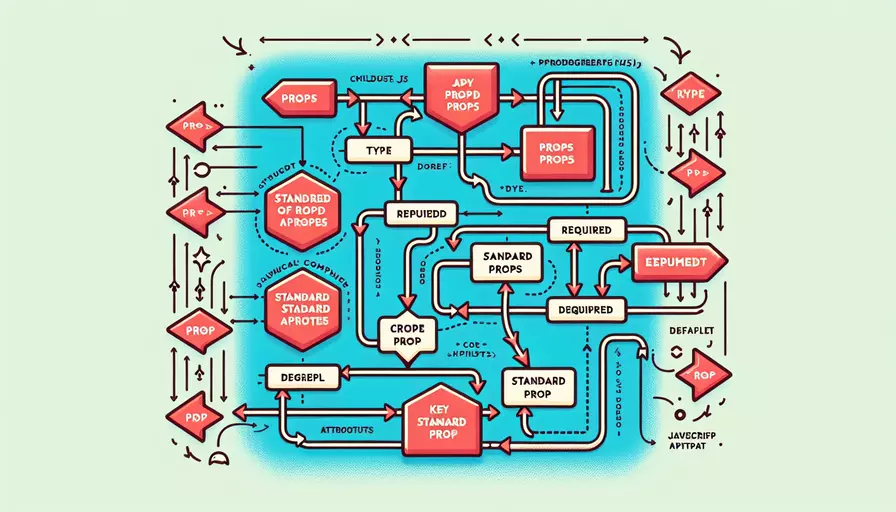
在 Vue 中,props 是用于父组件向子组件传递数据的机制。 它们使得组件之间的数据传递变得简单且直观。以下将详细介绍 Vue 中 props 的定义、使用方法及其重要性。
一、PROPS 的定义与基本用法
1、定义:
Props 是 Vue 组件的自定义属性,用于从父组件向子组件传递数据。它们的名字可以在子组件中定义,并且父组件在使用子组件时,可以通过这些属性来传递数据。
2、基本用法:
在子组件中,通过 props 选项定义接收的属性名:
Vue.component('my-component', {
props: ['title', 'content']
});
在父组件中,使用子组件并传递数据:
<my-component title="Hello" content="This is content"></my-component>
二、PROPS 的类型验证与默认值
1、类型验证:
Vue 提供了多种类型验证方式,确保传递的数据符合预期:
Vue.component('my-component', {
props: {
title: {
type: String,
required: true
},
content: {
type: String,
default: 'Default content'
},
likes: {
type: Number,
default: 0,
validator: function (value) {
return value >= 0;
}
}
}
});
2、默认值:
在子组件中,可以为 props 提供默认值,当父组件未传递该属性时,使用默认值:
Vue.component('my-component', {
props: {
content: {
type: String,
default: 'This is default content'
}
}
});
三、PROPS 的动态传递与单向数据流
1、动态传递:
在父组件中,props 也可以通过动态绑定的方式传递:
<my-component :title="dynamicTitle" :content="dynamicContent"></my-component>
其中 dynamicTitle 和 dynamicContent 是父组件中的数据。
2、单向数据流:
Vue 中的 props 是单向数据流,即子组件不应该直接修改从父组件传递来的数据。这保证了数据的流动方向是从父组件到子组件,便于调试和维护:
Vue.component('my-component', {
props: ['title'],
methods: {
updateTitle(newTitle) {
// 错误!不应该直接修改 props
this.title = newTitle;
}
}
});
四、PROPS 的高级用法与注意事项
1、高级用法:
使用 Object 或 Array 类型的 props 传递复杂数据:
Vue.component('my-component', {
props: {
user: {
type: Object,
required: true
}
},
template: '<div>{{ user.name }}</div>'
});
在父组件中:
<my-component :user="{ name: 'John Doe', age: 30 }"></my-component>
2、注意事项:
- 确保 prop 的命名不与 HTML 属性冲突,例如
class、style等。 - 避免在子组件中直接修改 props,可以通过事件或 Vuex 等状态管理工具实现双向数据绑定。
五、PROPS 与事件结合的实用场景
1、父组件向子组件传递回调函数:
父组件可以将回调函数作为 prop 传递给子组件,子组件调用该函数实现与父组件的交互:
Vue.component('my-component', {
props: ['onSave'],
template: '<button @click="onSave">Save</button>'
});
在父组件中:
<my-component :onSave="handleSave"></my-component>
2、子组件向父组件传递数据:
子组件可以通过事件将数据传递给父组件,通常配合 props 使用:
Vue.component('my-component', {
props: ['value'],
template: '<input :value="value" @input="updateValue">',
methods: {
updateValue(event) {
this.$emit('input', event.target.value);
}
}
});
在父组件中:
<my-component v-model="parentValue"></my-component>
六、PROPS 与 VUEX 的结合
1、使用 Vuex 管理全局状态:
当需要在多个组件间共享数据时,可以使用 Vuex 管理全局状态,而不是通过 props 层层传递:
const store = new Vuex.Store({
state: {
user: { name: 'John Doe', age: 30 }
}
});
Vue.component('my-component', {
computed: {
user() {
return this.$store.state.user;
}
},
template: '<div>{{ user.name }}</div>'
});
2、在子组件中使用 Vuex:
子组件可以直接从 Vuex 中获取数据,而不需要通过 props 传递:
Vue.component('child-component', {
computed: {
user() {
return this.$store.state.user;
}
},
template: '<div>{{ user.name }}</div>'
});
总结
在 Vue 中,props 是组件间传递数据的重要机制。通过正确使用 props,可以使组件更加模块化和可复用。本文详细介绍了 props 的定义、使用方法、类型验证、默认值、单向数据流、动态传递、与事件结合的实用场景及与 Vuex 的结合使用。理解并掌握这些内容,可以帮助开发者更加高效地构建复杂的 Vue 应用。建议在实际开发中,多加练习和应用这些知识点,以提高开发效率和代码质量。
相关问答FAQs:
1. 什么是Vue中的props?
在Vue中,props是一种用于从父组件向子组件传递数据的机制。通过props,父组件可以将数据传递给子组件,并在子组件中使用这些数据。props是单向数据流,子组件不能直接修改props中的数据,只能通过事件向父组件传递数据。
2. 如何在Vue中使用props?
要在Vue中使用props,首先需要在子组件中定义props。在子组件的组件选项中,使用props属性来定义需要接收的数据的名称和类型。例如,可以定义一个名为"message"的props:
props: {
message: String
}
然后,在父组件中使用子组件时,可以通过传递属性的方式将数据传递给子组件。例如,可以在父组件中使用以下代码:
<ChildComponent :message="Hello World"></ChildComponent>
在子组件中,可以通过this.message来访问到父组件传递的数据。
3. 如何给props设置默认值?
有时候,我们可能希望给props设置默认值,以防止父组件没有传递数据时出现错误。在Vue中,可以使用default属性来设置props的默认值。
props: {
message: {
type: String,
default: 'Hello World'
}
}
如果父组件没有传递message属性,子组件将使用默认值'Hello World'。如果父组件传递了message属性,子组件将使用父组件传递的值。这样,即使父组件没有传递数据,子组件也可以正常工作。
文章标题:vue 中 props是什么,发布者:不及物动词,转载请注明出处:https://worktile.com/kb/p/3561082

 微信扫一扫
微信扫一扫  支付宝扫一扫
支付宝扫一扫 